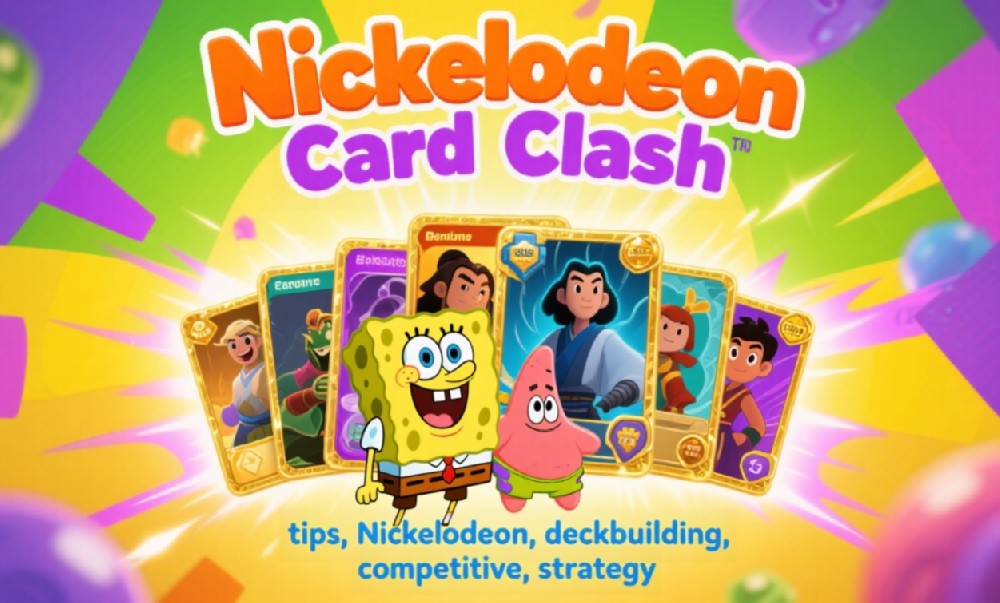Nickelodeon Card Clash - Nostalgia Wrapped in Competitive Fire
Nickelodeon Card Clash: The Game That Reminded Me Why I Love to Lose (And Win)
Let me start with this: I did not want to like Nickelodeon Card Clash. I downloaded it as a joke. A card game with SpongeBob? Really? That felt like trying to win poker with Uno cards. But fast-forward two weeks, and I’m waking up early—not to check email, not to doomscroll—just to see if I finally pulled that legendary Zuko card. Yeah. This game got me.

There’s something dangerous about nostalgia. It lowers your guard. You see familiar faces like Aang, Patrick, or Leonardo, and you think, “Aw, this’ll be cute.” You don’t realize you're entering an arena where every decision is war. And somehow, under all that cartoon color and sound, Nickelodeon Card Clash has built a game that demands respect. It’s silly and strategic. Bright and brutal.
The Setup: Cute Wrapping, Sharp Blade
You begin with a starter deck. It’s fine. It’s not bad. It’s like getting free fries when you wanted a burger. But then you win your first match, and the opponent drops a card you’ve never seen—say, a glowing epic version of Toph that absorbs damage like she’s made of steel—and suddenly you want more. Not just more cards. More control. More edge.
And that’s the magic here. Nickelodeon Card Clash hides a real game under layers of pop culture. It gives you the Saturday morning smile, but the satisfaction of a checkmate. Your deck is your weapon, and as I learned very quickly, sentiment is not a strategy. I benched SpongeBob for Azula. Cold decision. No regrets.
The Battles: Simpler Than Chess, Smarter Than You Think
Now let’s talk mechanics. Because this isn’t just about flashy cards and memories. The matches in Nickelodeon Card Clash are tight. You choose your cards carefully—offensive types, support units, status disruptors—and position them like you're setting up dominoes you hope fall exactly your way.
There’s that moment—about five or six matches in—where the tutorial ends and the real game begins. Suddenly your decisions matter. Stack Sandy Cheeks behind Raphael for defense? Bold. Or reckless. Or genius. You won’t know until it works. Or backfires.
And that’s what I love. It’s not just win or lose. It’s “what did I misread?” Sometimes it’s obvious (note to self: don’t put a healer in the front row). Sometimes it’s maddening. But either way, you’re learning, adjusting, evolving. The game trains you like a mentor with a bright yellow hat and a merciless grin.
Characters That Feel Like Tools, Not Just Tokens
I was genuinely surprised by how well each character’s design ties into their original personality. Patrick is a tank. Azula burns through enemies. Zuko has a vengeance mechanic that triggers on defeat—come on, that’s beautiful game writing. It’s not just flavor text. These are playable character philosophies.
I once tried to build a pure defensive deck centered on defensive combos—Toph, Squidward, and a healing Korra card. It was slow, clunky, and lost half its matches. But man, when it worked, it was like building a fortress with marshmallows and somehow surviving an earthquake. The game rewards creativity without ever coddling you. You can try weird, you just have to make it work.
Events: Pressure Cookers in Disguise
Let’s be real. Most game events are just ad campaigns dressed as content. But here? The events in Nickelodeon Card Clash are honest-to-goodness shakeups. One week it was “No main characters allowed.” Another week, we had to use only elemental benders. That second one? I nearly snapped. My deck wasn’t ready. But it forced me to improvise, which is when the real fun started.
The best moment? Unlocking a limited-edition Danny Phantom card mid-event, and watching him phase through three enemies like he was born to do it. I didn’t even like the show. But the card? I built a deck around it for three days straight. That’s what good design does. It makes you care, unexpectedly.
Graphics and Feedback: More Than Just a Pretty Face
Yes, the cards are beautiful. Yes, the animations are smooth. Yes, the entire app feels like a love letter to 2000s Nickelodeon. But more than that, it feels...responsive. When you place a card, there’s a soft thud. When you win, the animation is subtle, not screaming in your face. It respects your attention.
That sounds small. But play a few dozen matches, and you realize how vital that is. There’s no clunky transitions, no visual fatigue. It’s balanced. Slick. And when a game is this addictive, smooth UI becomes the invisible MVP.
Tutorials: Quick, Clean, and Genuinely Useful
Here’s something rare: I actually recommend the in-game tutorial. It’s short. Three minutes maybe. But it covers the essentials without fluff. Even better, there’s an entire strategy hub you can browse later, full of tips like “How to layer support cards” or “Avoid common new-player traps.” I found myself in that hub more than once at 1 AM.
There’s one guide—on character pair synergy—that felt like it was written by someone who loves this game. Not just understands it, but loves it. That passion comes through. And it’s contagious.
The Wrap-Up: More Than a Game, Less Than an Obsession
I won’t pretend this is the most complex card game out there. It’s not. But Nickelodeon Card Clash strikes that perfect balance of charm and challenge. It makes you care. It makes you think. And sometimes—just sometimes—it makes you furious enough to try again.
If you like strategy, if you love these characters, or if you just want something that respects both your intelligence and your inner child, this one’s worth a download. You’ll start for the memes. Stay for the mechanics. And maybe, just maybe, you’ll bench SpongeBob too.
Keywords: tips, Nickelodeon, deckbuilding, competitive, strategy









